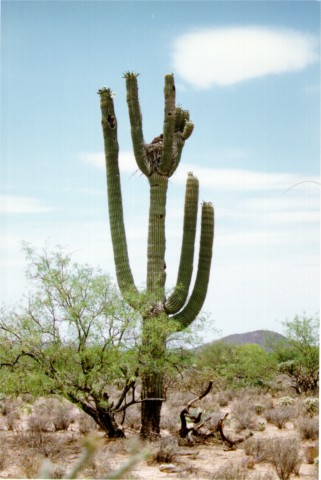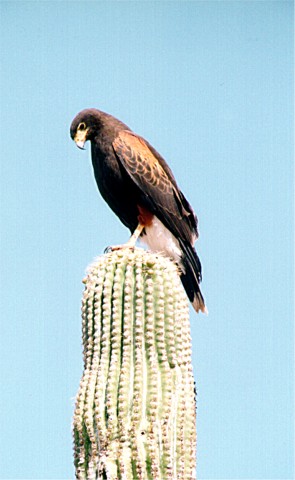
HARRIS' HAWKS
birdfotos.com

HARRIS' HAWKS
**********
To learn more click the link
http://www.peregrinefund.org/Explore_Raptors/hawks/harrishk.html

***********************
Any image with a red or colored border can be
clicked on to enlarge the image.

***********

**************
*******************
Now, about the bird dropping tree branches into the nest!
If you have absolute written proof as to why they do this, and what
type of a tree the branch is from, please let me know.
Nest Sanitation
The very fragility of nests may be adaptive in forcing many birds to build a new nest every year; nests that do not deteriorate over the winter can harbor potentially lethal numbers of parasites or pathogens that may withstand the cold and await returning nesters. Indeed, despite their appearance as peaceful retreats, nests are often alive with invertebrates feeding on the birds, on the birds' waste products, or on each other. Infestations of parasites (fly maggots, fleas, ticks, and mites) or pathogens (bacteria and fungi) are discouraged by various means. One that is widely used is, of course, removal of the fecal sacs of the young.
Recent work has shown that many birds repeatedly add green leaves or cedar bark with pesticidal properties to their nests. This behavior has been recorded in numerous birds of prey that often reuse old nests (some kites, many hawks, and most eagles) and in some passerines (especially secondary cavity nesters, such as European Starlings and Purple Martins). Interestingly, nuthatches, which are also secondary cavity nesters, ritually smear pine pitch and rub insects around the entrance of their holes instead of adding fresh greenery. Both the pitch and the defensive chemicals of the insects may discourage parasites.
Many birds avoid reusing old nests, even if the nests do not deteriorate over the winter. When heavy parasite infestations do occur, nestling mortality rises, nests may be deserted, and in extreme cases, entire colonies have been known to move to a new location.
Copyright ® 1988 by Paul R. Ehrlich, David S. Dobkin, and Darryl Wheye.
the above taken from: http://www.stanfordalumni.org/birdsite/text/essays/Nest_Sanitation.html
Some materials are selected specifically to help sanitize the nest. More than half of our hawk species routinely add fresh green leaves that contain natural pesticides such as hydrocyanic acid, which may inhibit infestation by insect parasites. Such preventive efforts are not limited to birds of prey. Users of old nest sites, such as starlings, can discriminate between helpful and ornamental leaves and select those that deter lice and bacteria for inclusion in their nests.
The above was taken fron this web site on nest materials
http://www.stanfordalumni.org/birdsite/text/essays/Nest_Materials.html
Animation by my son Stanley Robinson
Squaw Creek Farm
http://members.tripod.com/~StanRitaR/index.html
Next page.
To the bird links.
Hawks index
You may contact me at birdfotos@aol.com
This web site contains photos of the following.Birds,arizona birds,wild birds of arizona,Hummingbirds, Arizona desert life,flowers plants,trees,cactus,blooms,cicada,locust,frogs,tortoise,snakes,moths, butterflies,wolf,lizard,peccary,javelina,coyote,dinosaur insects,fox,grasshopper,hawks,larks,sparrow, warblers,jays,tanager,wrens,robins,grosbeak,hummingbirds,woodpeckers,verdins,phainopepla,blackbird, bunting,ducks,finch,doves,flycatchers,gnatcatchers,kinglet,oriole,owl,pyrrhuloxia,quail,rail,snipe roadrunner,thrasher,thrush,titmouse,towhee,trogon,vireo,vultures and much more,museum,water,Arizona desert,deserts,mountains,